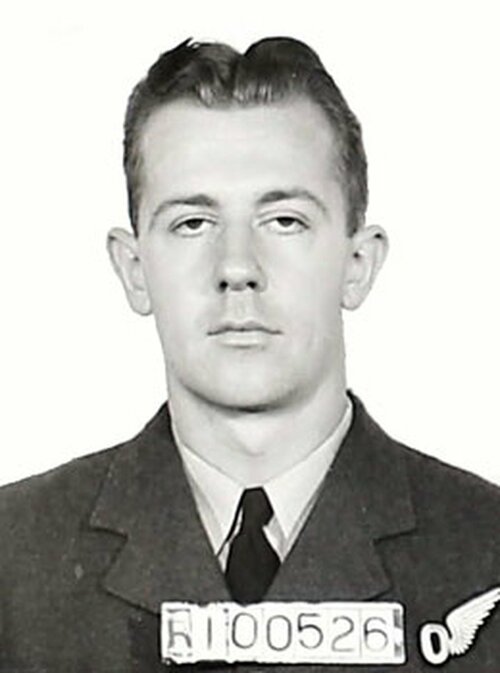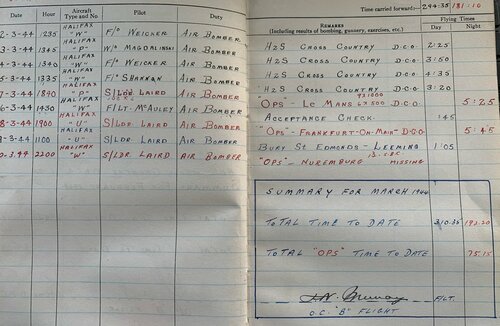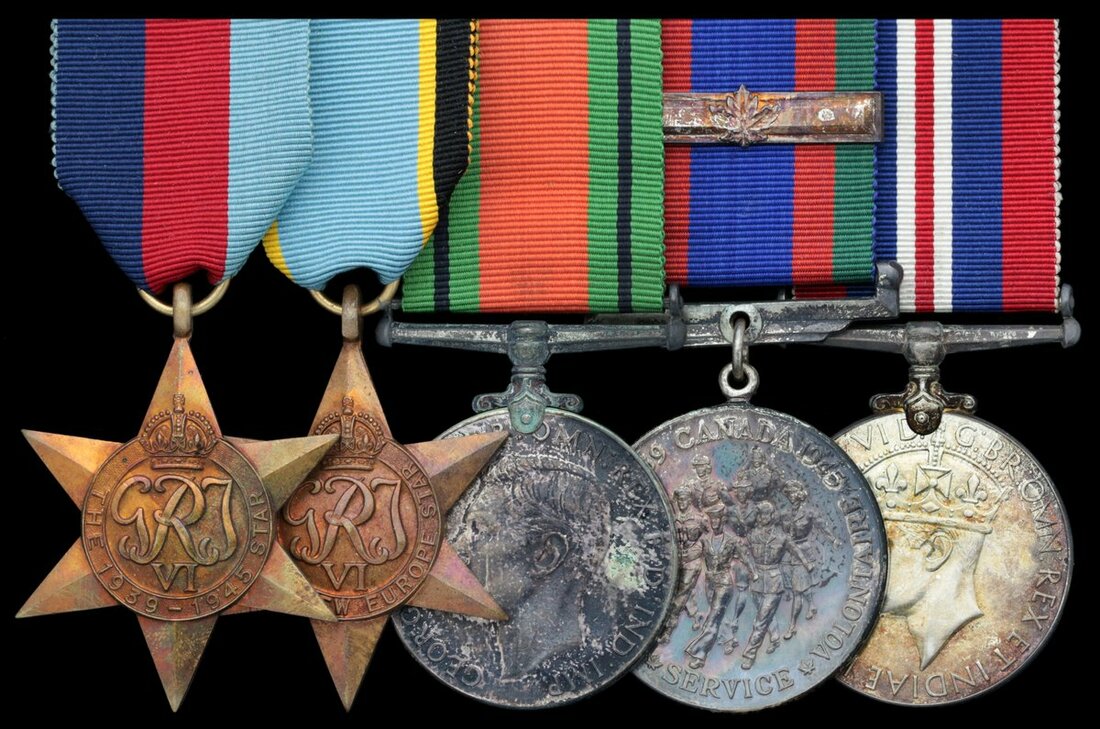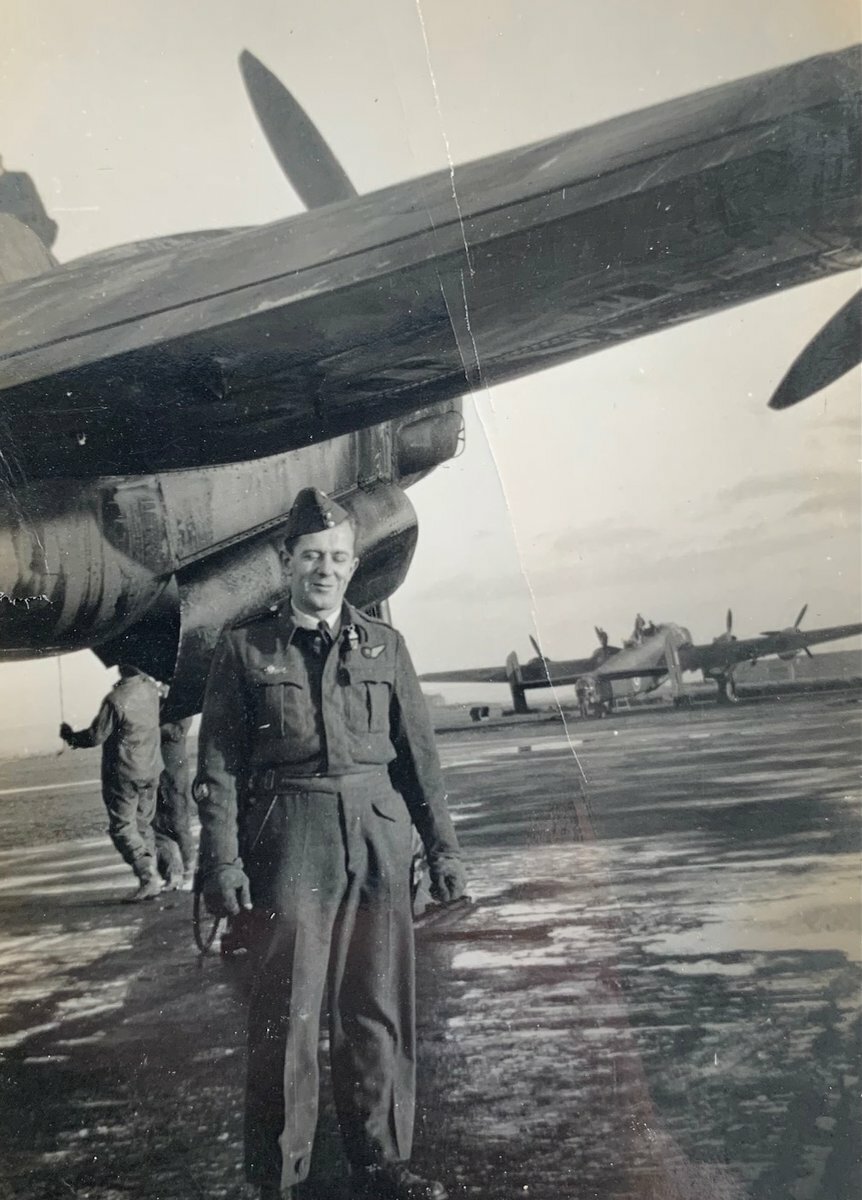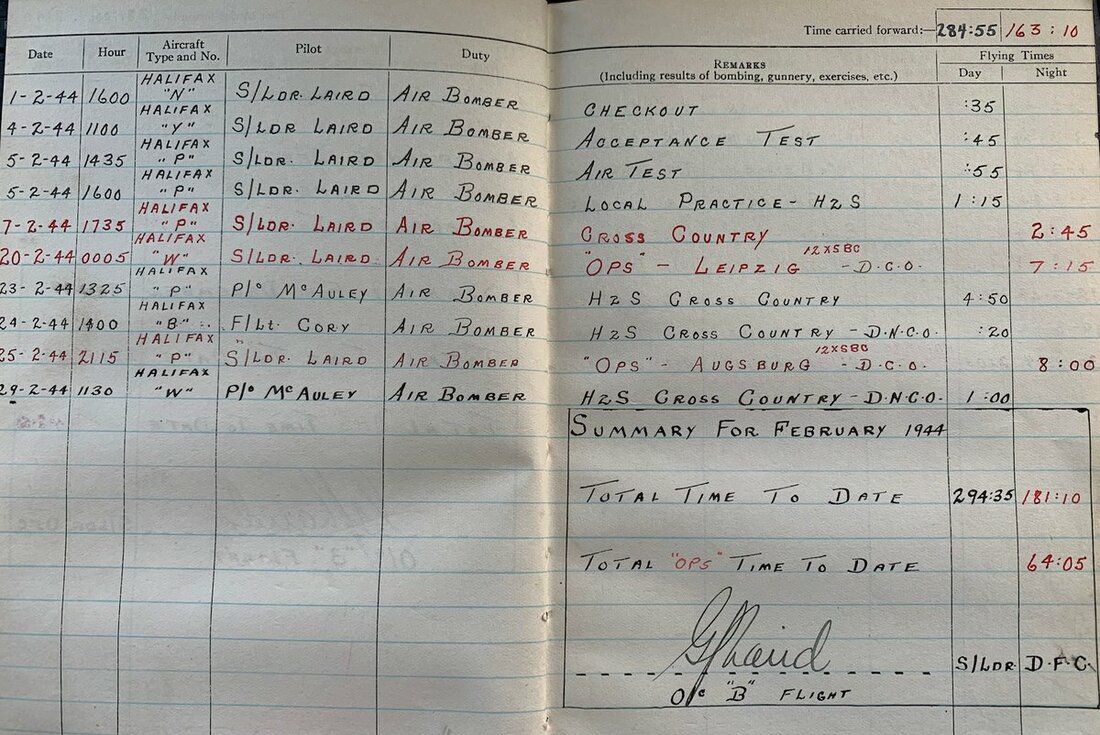Auction: 21003 - Orders, Decorations and Medals
Lot: 403
(x) A poignant campaign group of five awarded to Pilot Officer (Air Bomber) J. C. Corbally, Royal Canadian Air Force, who having flown on a hair-raising raid on Kassel in October 1943, in which his aircraft was shot to pieces, the gallant actions of its crew to return the 'flying sieve' led to the award of a C.G.M. and D.F.C.
Corbally was tragically killed on 30 March 1944 when flying on Ops destined for Nuremburg, but his Halifax was in a mid-air collisision which cost his life
1939-45 Star; Air Crew Europe Star; Defence Medal 1939-45, silver; Canadian Volunteer Service Medal with Clasp; War Medal 1939-45, silver, all in their stamped boxes of issue, together with his RCAF Birks Bar dedicated to 'P/O J. C. Corbally R.C.A.F. 31 Mar 1944', this with its original envelope and folder, extremely fine (5)
Joseph Corbally was born on 11 July 1919 at Toronto and was the son of Joseph and Justina Corbally. Having enlisted in the Royal Canadian Air Force on 24 March 1941, he initially began training as an Air Observer but later switched to air bomber training. Prior to going overseas he had stated that he married Helen Isobel Clem, but the pair never married, perhaps making the statement in case Corbally would be killed, so that she would be entitled to a Dependants' Allowance should he be killed.
Training in the United Kingdom in late 1942, Corbally joined No. 427 Squadron on 26 August 1943 at Leeming, Yorkshire. He flew his first Op on Mannheim on 5 September and a further Op to Hanover followed on 22 September.
It was on just his third Op, to Kassel, on 3 October, that he had a fateful flight. As recalled by Yorkshire Aircraft:
'Halifax LK637, took off from Skipton on Swale airfield at 18.30hrs for an operational flight to bomb Kassel. Outbound, at 20.10hrs, the Halifax was attacked from below by an unseen enemy aircraft while flying over the Zuider Zee, Holland. The rear turret was extensively damaged and the fuselage was raked in cannon fire killing both the rear gunner and wireless operator and also injuring the flight engineer. The Halifax also caught fire but after the pilot put the aircraft into a steep diving turn the airflow put out the fire. The intercom was disabled in the attack as was the hydraulic system and also the bomb doors were damaged initially preventing them being jettisoned.
On the return flight to England a 2000lb bomb fell through the damaged bomb doors but this then opened the doors to allow the rest of the larger high explosive bombs to be jettisoned. Having made landfall and with the undercarriage being stuck in the up belly landing with bombs on board the aircraft was probably not ideal. Having made contact with flying control they had initially received instruction that the aircraft be abandoned and not landed but in and out of consiousness the flight engineer managed to instruct others how to locate and then cut hydraulic pipes that would allow the undercarriage to lower and lock down. Realising that the seriously injured flight engineer would probably not survive a parachute descent the pilot opted to try and land the aircraft to give a better chance of survival. They landed at Skipton on Swale airfield at around 22.40hrs but some incendary bombs then ignited on landing and set the aircraft on fire. The five remaining crew members made good their escape from the aircraft and the fire was soon put out. The pilot was later awarded the Distinguished Flying Cross while the injured flight engineer was awarded the Conspicuous Gallantry Medal for their actions on this night.'
Sergeant William Harry Cardy was duly awarded the C.G.M. whilst Corbally was made Pilot Officer on 30 November 1943, perhaps as a result of his conduct on that night. He flew twice during 'Big Week', completing Ops to Leipzig on 20 February 1944 and to Augsburg on 25 February. Corbally flew his 13th Op on 30 March 1944, it was to be his last. Flying in Halifax LV923, his aircraft collided with a Lancaster from No. 427 Squadron. Aged just 24, he is buried in Hotton War Cemetery, Belgium.
Sold together with a good original archive comprising:
(i)
His Flying Log Book, with all his Ops and training entries.
(ii)
Letters of condolence to his fiancee related to his death, besides forwarding letters for the Medals.
(iii)
Newspaper cuttings related to his career, besides cloth and metal brevets and Insignia.
Subject to 5% tax on Hammer Price in addition to 20% VAT on Buyer’s Premium.
Sold for
£580
Starting price
£580


